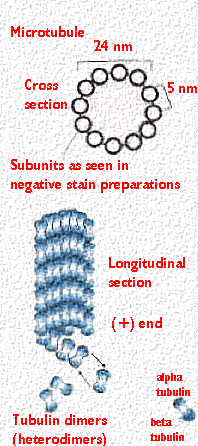Sandbox Reserved 456
From Proteopedia
| Line 8: | Line 8: | ||
| - | Tubulin is a globular protein. The most common types of tubulin are alpha and beta tubulin | + | Tubulin is a globular protein. The most common types of tubulin are alpha and beta tubulin. Its main function is to create microtubules. The alpha and beta proteins polymerize to create the microtubule. Gama Tubulin is also an important tubulin protein. Tubulin is used in plants as well as animals. For plants, it is important for acentrosomal microtubule nucleation in plants. This can be shown in Arabidopsis. The gama tubulin protein binds with other proteins in order to create a “cap” at the negative end of the microtubule and acts as a scaffold for the alpha/beta tubulin dimer to polymerize. In plants, many viruses such as gemini-viruses can attack these proteins and cause cell death which leads to plant death. One particular study by Keech et al showed that Cabbage Leaf Curl Virus (CaLCuV) induced senescence in Arabidopsis plants which lead to plant death. |
| + | |||
| + | Microtubules are important for maintaining cell structure, providing platforms for intracellular transport, forming the spindle during mitosis, as well as other cellular processes. The microtubules may also help to move things in the cell like vesicles, granules, organelles, and chromosomes by using special attachment proteins. | ||
| - | Microtubules are important for maintaining cell structure. It provides platforms for intracellular transport, helps to form the spindle during mitosis, and also contributes to other cellular processes. Many viruses such as gemini-viruses can attack these proteins and cause cell death which leads to plant death. One particular study by Keech et al showed that Cabbage Leaf Curl Virus (CaLCuV) induced senescence in Arabidopsis plants which lead to plant death. | ||
| Line 22: | Line 23: | ||
== '''Mechanism of Action''' == | == '''Mechanism of Action''' == | ||
| + | In order for the Tubulin proteins to form the microtubules, they must first begin by starting at the stage of nucleation. This occurs when the tubulin alpha and beta Tubulin combine to form a heterodimer and then combine with other heterodimers to form oligomers. This step also requires GTP and Magnesium. They attach by hydrolyzing the GTP into GDP at the beta end. [[Image:tubulin1.jpg]] | ||
Revision as of 19:51, 1 May 2012
| This Sandbox is Reserved from 13/03/2012, through 01/06/2012 for use in the course "Proteins and Molecular Mechanisms" taught by Robert B. Rose at the North Carolina State University, Raleigh, NC USA. This reservation includes Sandbox Reserved 451 through Sandbox Reserved 500. | |||||||
To get started:
More help: Help:Editing For more help, look at this link: http://www.proteopedia.org/wiki/index.php/Help:Getting_Started_in_Proteopedia Tubulin
IntroductionTubulin is a globular protein. The most common types of tubulin are alpha and beta tubulin. Its main function is to create microtubules. The alpha and beta proteins polymerize to create the microtubule. Gama Tubulin is also an important tubulin protein. Tubulin is used in plants as well as animals. For plants, it is important for acentrosomal microtubule nucleation in plants. This can be shown in Arabidopsis. The gama tubulin protein binds with other proteins in order to create a “cap” at the negative end of the microtubule and acts as a scaffold for the alpha/beta tubulin dimer to polymerize. In plants, many viruses such as gemini-viruses can attack these proteins and cause cell death which leads to plant death. One particular study by Keech et al showed that Cabbage Leaf Curl Virus (CaLCuV) induced senescence in Arabidopsis plants which lead to plant death. Microtubules are important for maintaining cell structure, providing platforms for intracellular transport, forming the spindle during mitosis, as well as other cellular processes. The microtubules may also help to move things in the cell like vesicles, granules, organelles, and chromosomes by using special attachment proteins.
Structure
The picture shown is of the dimerized alpha and beta tubulin. Each part is important in creating the microtubule for plant growth. The alpha portion provides the negative end of the tubule while the beta end provided the positive end. The negative end is where the gamma tubulin attaches to so that the micotubule will only continue polymerizing on the positive end.
Mechanism of ActionIn order for the Tubulin proteins to form the microtubules, they must first begin by starting at the stage of nucleation. This occurs when the tubulin alpha and beta Tubulin combine to form a heterodimer and then combine with other heterodimers to form oligomers. This step also requires GTP and Magnesium. They attach by hydrolyzing the GTP into GDP at the beta end.
Medical Implications or Possible ApplicationsTubulin is an important protein related to plant growth. By understanding how Tubulin reacts to certain viruses, researchers can better understand how plants are affected by viruses. Once this is understood, researchers can possibly find ways to prevent cell and plant death.
|

